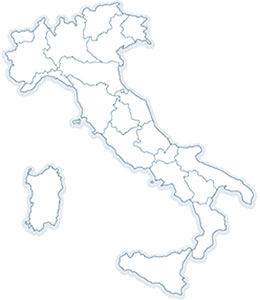Itinerary: Lecce
Lecce and its beautiful Baroque churches and monuments
Lecce is located in a central position on the Salento peninsula famous for its beautiful Caribbean-style beaches, only 11 kilometers from the Adriatic Sea and just a few more kilometers from the Ionian Sea.
Lecce is a very ancient city where Messapian origins and remains of the Roman rule have left evidence. Nowadays, it is home to an extraordinary number of artistic, cultural and architectural monuments, churches, buildings, and attractions. Lecce is mostly known as the Italian city of the Baroque style: actually, this style is so particular and gorgeous here, that people often talk about it as the "Lecce-style Baroque".
Entering Porta Napoli (pic n°5), you will get to the historic center of Lecce. Strolling along its streets you will have the chance to visit some beautiful churches, such as Church Santa Maria della Provvidenza and the fourteenth-century Basilica Santa Croce (pic n°1, pic n°6) which is the most representative example of the city's Baroque style. You can admire as well imposing palaces, such as Palazzo Adorno and Palazzo del Governo.
Walking down via Principi di Savoia and Via Umberto, you will get to Piazza Sant'Oronzo (pic n°3), (the square was named after the saint patron of Lecce), which is the heart of the city with elegant cafes and wonderful mosaics that embellish the floor.
Here, you can visit some monuments of great interests such as the 29 meters high Column of Sant'Oronzo (pic n°3) located in the middle of the square or the ancient Roman Amphitheater (pic n°3), which is the most important Roman evidence of the city. It was built with tuff pillars during the 2nd century A.D., and it was once able to host 20,000 spectators. Today, only a small part of the ancient amphitheater is preserved, as most of it are buried under the newer buildings.
In the same square, you can visit the remains of the wonderful Palazzo del Seggio, also known as Sedile (pic n°4), the former town hall built in 1592 and now serves as an exhibition and congress center. Church San Marco and the sixteenth-century Church Santa Maria delle Grazie make the square even more charming.
Just a few steps from here and will reach another masterpiece of the city: the Castle of Charles V, which was built in 1539 at the request of the king. For many years, the imposing castle has served as a defense of the city, but it has also been a theater and a military area. Today, it is a cultural center where many exhibitions and events take place. It is well worth a visit, especially Salone della Duchessa, (Duchess Hall) which features breathtaking decorations.
Not far from Piazza Sant'Oronzo (pic n°3) there are two not-to-be-missed attractions: north-east you will find Villa Comunale surrounded by beautiful gardens while turning southwest you will reach the main Cathedral of the city, dedicated to Maria Santissima Assunta (pic n°2). This three-nave church was first built in 1144 and rebuilt in the seventeenth century. It includes beautiful statues on the façades, as well as many stuccos and frescoes inside. The 68 meters high bell tower is one of the highest bell towers in Europe.
In Lecce, there are around 100 churches and buildings of great interest so you can realize how beautiful this city can be. Just some of them: Church SS. Nicolò e Cataldo, Church San Giovanni Battista, Church San Matteo, Abbey Santa Maria di Cerrate, the Roman Theater, and so on.
Also, Lecce is rich in interesting museums, such as the Archeological Museum Castromediano, or the Provincial Museum of the Community Traditions
The city is at its best at sunset, when the sunshine lightens the yellow stones of the buildings, and it is time to have an "aperitivo" (aperitif) based on almond milk, before heading to a restaurant and taste some delicious local dishes.
If you love art, history, architecture, and destinations full of charm, Lecce is the right place for you.
Some pics of Lecce:
Basilica Santa Croce (pic n°1); Cathedral Maria Santissima Assunta (pic n°2); Piazza Sant'Oronzo (pic n°3)
Palazzo del Seggio, also known as Sedile (pic n°6); Porta Napoli (pic n°5); Basilica Santa Croce, inside (pic n°6);












